#southern fishing
Explore tagged Tumblr posts
Text
I heard it's Superb Owl Sunday so I have prepared some superb owls for you.
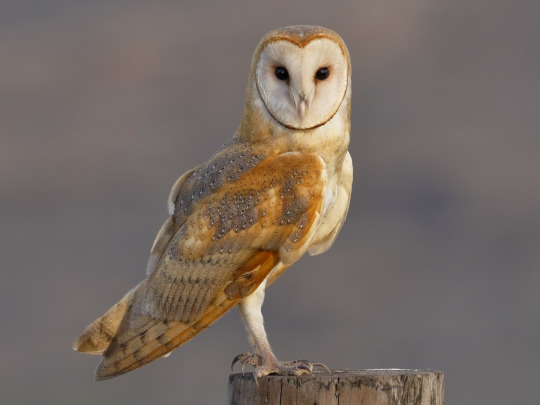
The barn owl is the most widespread species of owl, living on every continent except Antarctica. Their faces are shaped like a disk to help their hearing, giving them some of the best hearing of any owl. They mostly hunt by sound.

Snowy owls are the largest arctic predatory birds, They are born with black feathers and get whiter as they age. Females usually have more dark feathers than males.
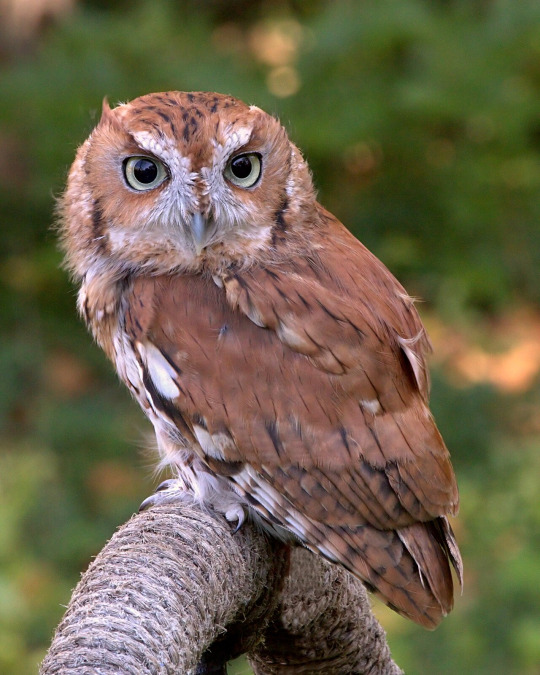
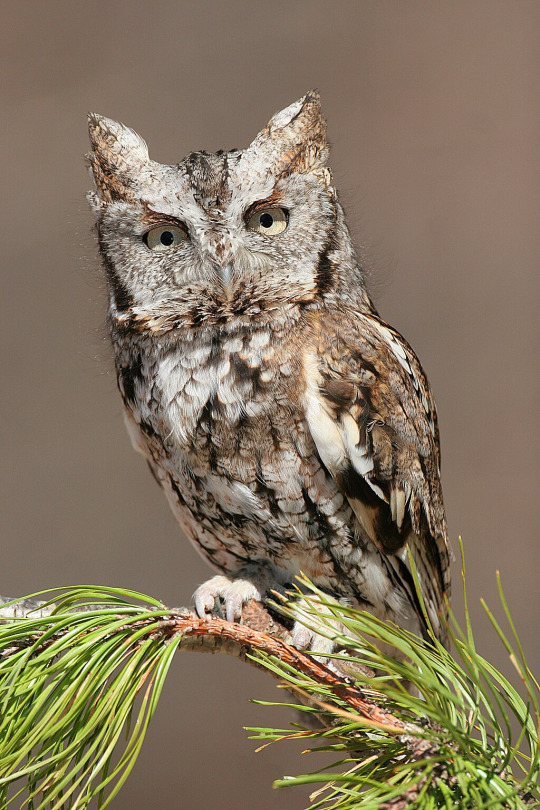
Eastern screech owls have a few feather variants that make them look like completely different species.

The southern white-faced owl can increase its metabolic rate during winter to compensate for the cold and lack of food. They lay their eggs in nests built and abandoned by other birds.

The great grey owl is the largest owl by length, but a lot of that is feathers and they're actually very light for their size. Their hearing is good enough to hear rodents burrowing through snow and they can break through hard-packed snow to catch prey.

Blakiston's fish owl is the largest owl by mass and eats mostly fish. Despite the name, they may be more closely related to eagle owls than fish owls.

The elf owl is the smallest owl species, barely larger than a sparrow. They hunt bugs and play dead when caught. They like to live in holes in saguaro cacti.

Burrowing owls live in underground burrows. While they can dig, they mostly take over burrows from other animals. Farmers killing prairie dogs has severely reduced burrowing owl populations. They decorate their burrows with feces to attract bugs to eat.
The barking owl is called that because
youtube
Its nice to have a day to appreciate superb owls. Feel free to spread the love by reblogging with some more owl facts.
#superb owl#superbowl sunday#owl#barn owl#snowy owl#eastern screech owl#southern white-faced owl#great grey owl#blakiston's fish owl#elf owl#burrowing owl#barking owl#animal facts#birds#birds of prey#Youtube
8K notes
·
View notes
Text




behold, my fish army 𓆝 𓆟 𓆞
#my photography#photographer on tumblr#my original post#original post#original photographers#nature photography#florida nature#florida#nature#nature core#adventure#lakeside#lake#landscape#sunset vibes#southern americana#southern goth aesthetic#southern aesthetic#water photography#water#goofs and gaffs#mermaidcore#mermaid#mermaid aesthetic#fishblr#fish#hope core#hopecore#hope#summer
122 notes
·
View notes
Text


The second image is of a different species, the largescale four-eyes (Anableps anableps). I included it due to how well it shows the eye, and as a result of far fewer photos available of Anableps dowei. This animal was requested!
#pacific ocean#marine fish#pacific coast#southern mexico#to nicaragua#brackish#fish#fishblr#unique animals#livebearer
165 notes
·
View notes
Note
Stingrays are fish right? Maybe a southern stingray?

fish 344 - southern stingray
help out palestine
69 notes
·
View notes
Text





american summers
#mine#american summers#DO NOT REUPLOAD#photography#rural#southern gothic#country aesthetic#america#usa#small town america#american gothic#regional gothic#american aesthetic#ruralcore#rural gothic#rural aesthetic#summer#summer aesthetic#summercore#nostalgia#fireworks#fish#fishing#river#lake#original photography#lensblr#photographers on tumblr#american teenager
386 notes
·
View notes
Text
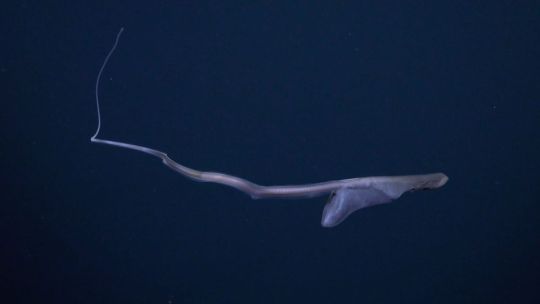
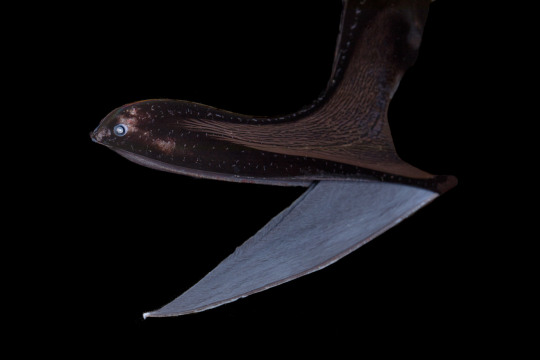
youtube
The Can-do Pelican Eel
The pelican eel, also known as the gulper eel (Eurypharynx pelecanoides), are the only known species of eel in the family Eurypharyngidae. They are found exclusively in the deeper parts of the water column, from depths of 500 up to to 3,000 m (1,600 to 9,800 ft), but are distributed throughout all the world's oceans.
The gulper eel is perhaps most famous for its unique body shape. Like many deep-sea fish, this species is highly adapted to its environment; maximum energy efficiency is the highest priority. To that end, the pelican eel has a large head, and a jaw estimated to be quarter of the total length of its body. The jaw is loosely hinged, meaning that gulper eels can open their mouths extremely wide. The rest of the eel, in contrast, is quite slender and long, about 0.75 m (2.5 ft) in length on average. Most individuals are black--so black, in fact, that they only reflect 0.5% of light; perfect for hiding from potential predators.
Although they look skinny, E. pelecanoides can expand their stomachs to hold prey much larger than themselves. Their primary prey consists of crustaceans and cephalopods, though they may feed opportunistically on other fish. Because it is so well camouflaged, it uses bioluminescent organs on the tip of its tail to attract prey. Gulper eels themselves are preyed upon by lancetfish and other larger deep-sea fish. To deter predators, they will gulp down a large amount of water; this stretches the loose skin around their head and throat, and inflates them to several times their usual size.
Because of their remote location, the breeding habits of gulper eels are relatively unknown. However, it is believed that smell plays a large part in attracting a mate, as pelican eels have highly developed olfactory organs. Like other eels, they're born as tiny, transparent larvae in a state known as the leptocephalus stage. At this stage, they do not have any red blood cells. Researchers aren't sure how long it takes gulper eels to become fully mature, or how long they live, but many believe that adults die shortly after mating.
Conservation status: The population size of E. pelecanoides has not been assessed, and thus the IUCN has not made a determination on its status. The greatest threat for this species is deep-sea trawling, which frequently brings up gulper eels as by-catch.
Photos/Video
Paul Caiger
Schmidt Ocean Institute
EV Nautilus Team (I highly recommend checking out their 2023 highlights reel!)
#pelican eel#gulper eel#Anguilliformes#Eurypharyngidae#eels#ray-finned fish#bony fish#fish#pelagic fauna#open ocean fauna#pelagic fish#deep sea#deep sea fish#Atlantic Ocean#Pacific Ocean#Indian Ocean#Arctic Ocean#Southern Ocean#animal facts#biology#zoology#ecology#marine fauna#marine fish#Youtube
180 notes
·
View notes
Text


54 common fish of texas, part 15: alligator gar (Atractosteus spatula), southern flounder (Paralichthys lethostigma)
#did you know Paralichthys means ''fish that doesn't work on one side''? alas he had to be upside down to fit my format#southern flounder always lie on their right side!#54 fish#art#orig#fish#gar#alligator gar#flounder#southern flounder
223 notes
·
View notes
Text
I am a avian natural historian, but I am helping with the overhaul of the fish collection at my university and the common names make me laugh.
My favorite so far is “Southern Slippery Dick” but “Alabama Hogsucker” is a VERY close second.
#like bird common names can be funny#but you fish folks have a great sense of humor#natural history#fish#fishblr#science#biology#alabama hogsucker#Southern Slippery Dick
327 notes
·
View notes
Text
Animal of the day for October 29: Great White Shark (Species Carcharodon carcharias)

The largest carnivorous shark, Great Whites travel hundreds of miles every day across the vast ocean in search of food. Great White Sharks have the ability to alternate between warm-blooded and cold-blooded metabolisms (heterothermy), which allows them to survive long periods without eating, or to explore colder waters. This would have likely given Great White Sharks and their kin an edge against other large sharks that existed, such as Alopias grandis or Hemipristis serra.
#animal of the day#october 29#october#great white shark#fish#cartiliginous fish#sharks#pacific ocean#indian ocean#atlantic ocean#southern ocean#australia
56 notes
·
View notes
Note
I didn't know Katara also had silver marks on the Kintsugi AU. How did you come up with that idea? Is it an in-universe cultural thing? If it is, is it exactly the same as Zuko's or does the Water Tribe have their own beliefs around it?
Sorry if I'm asking too many questions, I just really love how your mind works when it comes to these AUs 💖
Hello, and thanks for asking!
Initially, Kintsugi was a strictly Fire Nation tradition. Something to hold over the rest of the nations, and deepen their own belief of cultural superiority. Zuko hiding his scars played into that idea, since having gold inlaid in your body is a clear sign of Fire Nation blood—furthermore, High Fire Nation blood.
That being said, one lovely anon gave the suggestion that perhaps the other nations also have their own kinds of Kintsugi, and I fell in love with the idea. @ican-fixitbooks went even deeper into the particular philosophies of each nation regarding Kintsugi. I'll be using some quotes from them—watch for the italics.
It was during said brainstorming session that I thought of Katara having a silver Kintsugi scar, and how could it be used to enhance the themes of ATLA, Katara's arc, and this AU as a whole.
But a little background is necessary, I believe.
Kintsugi is a tradition practiced worldwide, with minor differences in philosophy/technique according to each nation.
The Earth Kingdom seal their scars with a substance that resembles bronze, as the mentality of breaking yourself down to build yourself back up better than you were is very central to their culture. It is used as a way to celebrate one's victories, made all the better if damage was taken to achieve it.
The elite have rather different views on this practice. They believe themselves to be above such things. That which is broken must be hidden away, which has interesting connotations when thinking about a certain blind earthbender.
The Air Nomad philosophy leans towards a naturalist approach. Anything natural doesn't need to be "improved" in their eyes. If a scar is there, it is there. Let it be there as a part of you, no different than any other, no need to be "made better", but in fact better to just "be".
Kintsugi is a cultural practice meant to celebrate making something beautiful out of something broken, arguably even making it better than it was. During Sozin's reign and forward, Kintsugi became a way to show the Fire Nation's superiority. Especially as that is essentially their philosophy for war: "Breaking the rest of the world so it can be reforged in fire, made a better, more perfect place."
As for the Water Tribes, there's the healing factor to take into account. The Northern Water Tribe isolated itself from the rest of the world once the war began, so they hold tight to their traditions and beliefs. If something is not broken, then why attempt to fix it? Kintsugi is scoffed at in the North—it is a foreign practice, one that is not necessary when all your wounds can be healed with bending.
However, the Southern Water Tribe has been exposed to the world. They have seen war. They have lived through it. They have suffered, but they are also free because of it, if only in spirit. The South is strong and proud and bold, so it comes as no surprise that silver Kintsugi becomes the mark of their warriors, their hunters, their people.
Katara was wounded during the last Southern Raid. After losing Kya in such a terrible way, Hakoda made sure to seal Katara's wound with the silver of their warriors, so that she would always remember that despite having been broken, she is still strong, beautiful, and proud.
The scar itself is long and thin, going from her right shoulder up to her jaw. It loosely resembles lightning.
And despite how she got it, despite all the things she lost on that day, despite it being a constant reminder of her mother's death—Katara loves her scar.
It grounds her. It pushes her forward. You are a warrior, it tells her. You are a survivor.
When Katara arrives at the North, her scar becomes yet another thing the Northerners hold against her. They use it to demean her, just as they do her gender and out-spoken personality.
The North believes a lot of things that Katara always considered natural to be a problem. What does it matter that she is a woman? What is wrong about being passionate? Why should having a scar mean she's broken?
This scar is something they cannot touch. The Northerners try to use it to demean her. To make her small. Self-conscious. Worthless.
They're scoffing at her mother's death.
Her strength.
Her beauty.
Her pride.
Her story.
And she will not allow it.
#dema answers#atla#avatar the last airbender#katara#zutara au#zutara#kintsugi au#kintsugi#worldbuilding#atla au#earth kingdom#fire nation#air nomads#northern water tribe#southern water tribe#katara of the southern water tribe#atla headcanons#I'm sorry if I made this answer too long!#I highly appreciate all your suggestions and ideas regarding this (or any other) of my AUs#Keep them coming! Take the concept and explore it! Think of how it would affect the characters and arcs and worldbuilding!#And tell me all about it#Make art write fics brainstorm and share headcanons and little ideas for scenes or designs... I'll love them all#This AU is ours. It is yours. And it's precious because of it.#What do you think of Toph? Or Suki? What about Zuko or Azula?#(I did not mention Sokka for a reason)#(That anecdote with the two fish hooks? He tried to seal that wound with Kintsugi ALL BY HIMSELF and... It didn't go well)#(At all)#Thank you sweetie for asking!#And for loving this AU and wanting to know more ❤️#Kintsugi AU lore
128 notes
·
View notes
Text

#fish in the window#my sister drew it#just a little guy#mine#photography#winter#february#fish#icy#window art#photoblog#my photo#original photographers#rural photography#photographers on tumblr#rural decay#rural aesthetic#rural gothic#southern#south east#southern americana#snow#cold#cold weather#winter photography
34 notes
·
View notes
Text
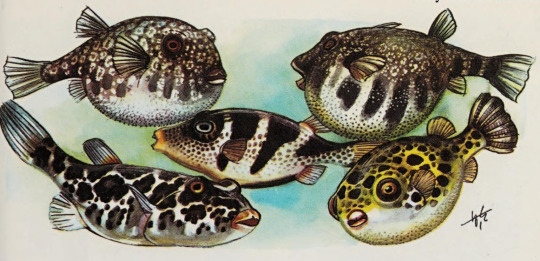
(left, from above) Southern puffer (Sphoeroides nephelus), Crowned toby (Canthigaster coronata), Checkered puffer (Sphoeroides testudineus) (right, from above) Northern puffer (Sphoeroides maculatus), Green pufferfish (Dichotomyctere fluviatilis)
Fishes of the World. Written by Hans Hvass. Illustrated by Wilhelm Eigener. Originally published in 1964.
Internet Archive
#marine life#fish#pufferfish#southern puffer#crowned toby#checkered puffer#northern puffer#green pufferfish#Wilhelm Eigener
217 notes
·
View notes
Text


DO NOT look up images of fishhook injuries on the internet
#The live action was WRONG sokka's most traumatic childhood event is getting two fishhooks in his thumb#anyway yeah I'm back on my atla shit#sokka#atla#katara#avatar the last airbender#atla sokka#atla katara#southern water tribe#south pole#fish hooks#TWO fish hooks#water tribe#water tribe siblings#fanart#art#digital art#illustration#atla fanart#comic strip#umossu
121 notes
·
View notes
Note
Silky anteater and alligator gar please!
Absolutely!! I'll do the alligator gar first, but the silky anteater is now also on my list!


#southern united states#midwest united states#mexico#north american fish#fish#freshwater fish#gar#alligator gar#actinopterygii#animal polls#my polls#poll blog#polls#tumblr polls#animals
165 notes
·
View notes
Text
Fish fact #620
Southern stargazer!

They can generate electricity with the use of specialised organs located in a pouch behind their eyes, the ability is mostly used for defense purposes. They can generate up to 50 volts of electricity!
#inspired by that one stargazer post#fish#fishfact#fish facts#fishblr#marine biology#marine life#marine animals#sea animals#sea life#sea creatures#biology#zoology#stargazer#stargazer fish#southern stargazer
278 notes
·
View notes
Text

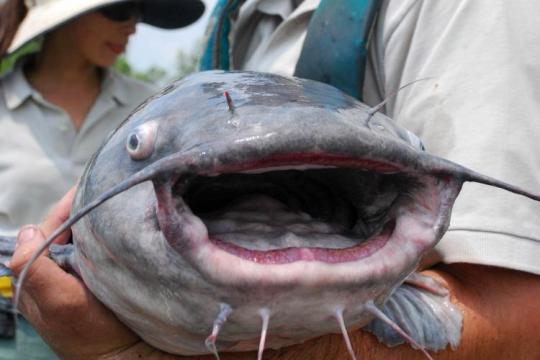
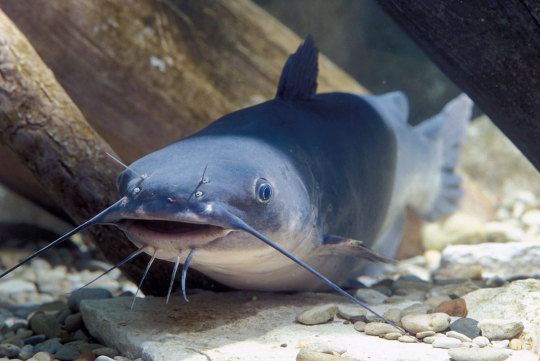
The Beautiful Blue Catfish
Blue catfish (Ictalurus furcatus) are members of the bullhead catfish family, native to the drainages of the Mississippi, Missouri, and Ohio river basins and the Gulf of Mexico. Because of their popularity as game fish, this species has also been introduced to freshwater systems throughout North and South America, and is considered invasive in these areas.
Like many catfish, I. furcatus is a bottom dweller. They can often be found near complex structures such as rocky outcroppings, fallen trees, or sunken structures that provide both food and shelter. The blue catfish is an opportunistic predator, consuming any fish or aquatic invertebrates it can find, as well as eggs, small amphibians, and injured or recently deceased animals. Adult I. furcatus are seldom prey for other species due to their size, but hatchlings and juveniles are often food for cormorants, willets, osprey, pelicans, and bald eagles. To deter predators, this species has serrated barbs along their dorsal and pectoral fins, each laced with a particularly painful toxin.
Though they can be difficult prey for other animals, the blue catfish is a popular target for fishermen, and for good reason; they're the largest species of catfish in North America. Adults can easily reach a length of 65 in (170 cm) and a weight of 165 lb (75 kg). As indicated by their name, most individuals are grey or blue, with a lighter underbelly. This species also lacks scales, a common characteristic of catfish, and the face is framed by long whisker-like barbels that help it detect nearby food.
While generally solitary, blue catfish aren't territorial, and tend to ignore each other until the mating season. Reproduction begins in April and continues until June, during which time males attract a female by building a nest and releasing attractive pheromones. Once a female has selected a male, she lays between 4,000-8,000 eggs per kilogram of bodyweight in his nest (i.e. if the female weighs 2 kg, she may lay between 8,000-16,000 eggs). The male then disperses sperm over the eggs. Following fertilization, the male chases away the female and guards the nest for about a week, at which time the eggs hatch. The hatchlings, also known as fry, stay close together in schools for several weeks before growing large enough to disperse. It will take them a further 5 years for them to reach maturity; on average individuals live about 10 years, but can live as long as 25.
Conservation status: The blue catfish is considered Least Concern by the IUCN. Within its native range, populations face minor threats from dams and droughts. Where it has been introduced, the species is considered invasive due to its voracious appetite.
If you like what I do, consider leaving a tip or buying me a ko-fi!
Photos
Missouri Department of Conservation
NOAA
Earl Nottingham
#blue catfish#Siluriformes#Ictaluridae#ictalurids#catfish#ray finned fish#bony fish#fish#freshwater fauna#freshwater fish#rivers#river fish#lakes#lake fish#north america#southern north america
233 notes
·
View notes